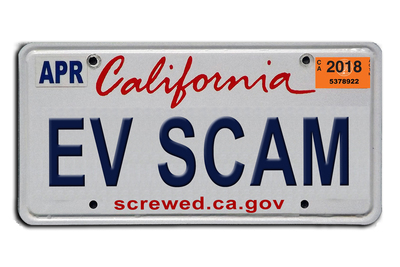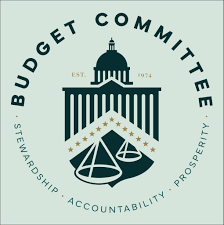Reports indicate that not a single electric vehicle charging station has been constructed with the $7.5 billion in federal investment available
 |
SEE ALSO: We Are No Longer Alone - Others Media Are Joining With The Auto Channel EV Position - It's Time for Ethanol Stakeholders to Fund The Auto Channel's creation, distribution and management of powerful pro-ethanol information.">
Multiple fact checked reports show that not a single electric vehicle charging station has been constructed with the $7.5 billion in federal investment available through the Federal Highway Administration’s National Electric Vehicle Infrastructure Formula Program, threatening the Biden administration’s goal to build 500,000 EV chargers by 2030. The final rule implementing the NEVI Formula Program contained a number of ABC-opposed, union-favoring labor requirements that may be contributing to the program’s stagnation.
The NEVI Formula Program is intended to implement provisions of the Infrastructure Investment and Jobs Act, signed into law in 2021, that dedicated $7.5 billion for electric vehicle charging stations. The program’s goal is to support the installation of electric vehicle chargers across the country as part of a domestic push to shift away from gas-powered vehicles.
In order to receive NEVI program funding, EV charging station developers are required to ensure that all electricians working on electric vehicle supply equipment projects either be certified by the International Brotherhood of Electrical Workers’ Electric Vehicle Industry Training Program or be a graduate or recipient of a continuing education certificate from a government-registered apprenticeship program with a focus on EVSE installation approved by the U.S. Department of Labor in consultation with the FHWA. To date, ABC is not aware of any such programs approved by the DOL and FHWA.
Additionally, the rule requires all NEVI-funded projects that require more than one electrician to use at least one GRAP-enrolled apprentice. Finally, other on-site, nonelectrical workers directly involved in the installation, operation and maintenance of chargers must have graduated from a GRAP or have appropriate licenses, certifications and training as required by the state.
ABC submitted comments in response to both the proposed rule and a request for information strongly urging the FHWA to avoid union labor requirements and to instead welcome all qualified contractors to build EV chargers. Unfortunately, the agency disregarded these recommendations in the final rule.
Under the IIJA, the NEVI funds are administered by states, which can contract out the construction and operation of the charging stations to private companies. So far, every state has taken the initial steps to receive the NEVI cash by submitting a plan to the Joint Office in 2022 and an update in 2023. But if a governor were to reject the funds, municipalities could apply to administer the funds instead.
According to a Politico article, Ohio was the first state to break ground on the nation’s first charger funded by the NEVI program in October. Following Ohio, Pennsylvania also broke ground on its first NEVI-funded charger in November. Another six states have awarded contracts for their first round of charging sites, while 15 states and Puerto Rico are in the process of soliciting bids from the private sector.
But 27 states and the District of Columbia have yet to even start soliciting bids, and some states like Missouri indicate they may not post their solicitation until 2025. (Three of those states—Nevada, New York and Vermont—are procuring some federally funded chargers outside of a public request for bids, but plan to solicit bids in the future.)
Even some states with high rates of EV adoption, like California and Washington, have yet to award any of their funds.
In a June study, the National Renewable Energy Laboratory projected the United States will need 1.2 million public chargers by 2030 to meet charging demand, including 182,000 fast chargers.
In response to unfavorable coverage about the NEVI program’s lack of progress, White House officials maintained that the administration is making progress and is on track to meet their EV charging station goals.
 |
Two Years, Zero EV’s President Biden Can’t Buy Us Out of This Mess
In December 2021, the Biden-Harris Administration boasted ambitious plans to encourage electric vehicle sales and manufacturing in the United States. The $7.5 billion plan came with promises of clean transportation accessibility and 500,000 electric vehicle charging stations across the country. Two years later, the American people are left with no chargers and wondering where their hard-earned dollars are going.
Word on the Street:
Via Politico Pro:
- States and the charger industry blame the delays mostly on the labyrinth of new contracting and performance requirements they have to navigate to receive federal funds. While federal officials have authorized more than $2 billion of the funds to be sent to states, fewer than half of states have even started to take bids from contractors to build the chargers — let alone begin construction.
- Consumer demand for electric vehicles is rising (lefty fairy tale propaganda TACH) in the United States, necessitating six times as many chargers on its roads by the end of the decade, according to federal estimates. But not a single charger funded by the bipartisan infrastructure law has come online and odds are they will not be able to start powering Americans’ vehicles until at least 2024.
- Getting chargers up and running across the country is essential to reaching President Joe Biden’s goal of having half the vehicles sold in the United States be electric by the end of the decade — a key cog of his climate agenda. Americans consistently say the lack of charging infrastructure is one of the top reasons they won’t buy an electric car (just one off the insurmountable problems with BEV - TACH)
- Aatish Patel, president of charger manufacturer XCharge North America, is worried the delays in installing chargers are imperiling efforts to drive up EV adoption.
The Big Picture:
President Biden’s green agenda has cost hardworking taxpayers billions of dollars, and the American people are not seeing any return on their investment. The Administration insists that the pace of the rollout is by design. However, President Biden’s attempts to build out clean energy manufacturers is so rushed and poorly planned out that companies affiliated to the Chinese Communist Party have been able to acquire U.S. green tax credits.
Biden’s green tax subsidies also proved to disproportionately benefit wealthier consumers and are inflationary to the economy, making homes and autos more unaffordable to the American people.
Ford cut back 40% of production on a $3.5 billion EV battery plant, costing around $1.5 billion and 1,700 jobs. These massive cuts were due to low market demand,
Improper program rollout coupled with decreasing confidence in President Biden’s empty promises have rendered American consumers less interested in purchasing an electric vehicle.
The Bottom Line:
The facts are clear. It is time President Biden wakes up to the reality that his green energy plan hurts the very people he claims to be helping. Hardworking families already struggle to make ends meet. They shouldn’t be shouldering the financial burden of President Biden playing politics with his wealthy friends. The demand for electric vehicles just isn’t there among Americans.
House Republicans are determined to reduce spending, lower inflation, and provide transparency to the American consumer to boost confidence in how their government spends their hard-earned dollars. The American people deserve accountability and transparency.


